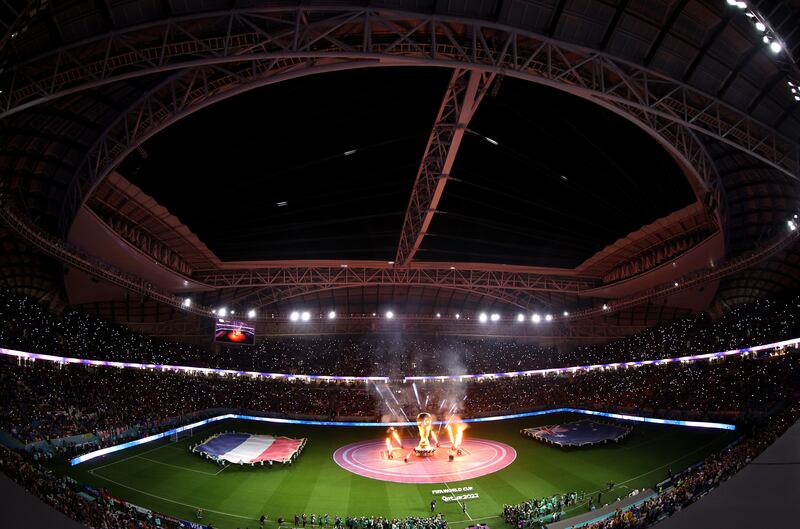If you’re looking forward to tomorrow’s World Cup final between France and Argentina, and if, like me, you’ve let your concerns about the morality of the whole Qatar 2022 racket take a back seat for a while, there’s one significant part of this story which deserves noting before the show draws to a close.
Forget the pop has-beens and long-retired footballers who attracted so much opprobrium at the outset of the tournament. Consider instead a much more select and allegedly more sophisticated group of internationally acclaimed cultural titans: the architects without whose creative efforts the event could not have taken place and the construction of whose designs led to so many deaths.
Take the late Zaha Hadid, who, when asked eight years ago about reported abuses on building sites in Qatar while her Al Wakrah stadium was being built, responded: “I have nothing to do with the workers. I think that’s an issue the government – if there’s a problem – should pick up.
“It’s not my duty as an architect to look at it,” she said. “I cannot do anything about it because I have no power to do anything about it. I think it’s a problem anywhere in the world. But, as I said, I think there are discrepancies all over the world.”
READ MORE
You wouldn’t let Robbie Williams away with that sort of thing. But architects, it seems, are different. Dictators and demagogues will always find writers and artists to toady up to them. But of all the creative artforms, it’s architecture that is bound up most with the raw expression of power, with all the cruelty and human misery that entails. There seems to be an umbilical link between grandiose architectural visions and the authoritarian mindset.
[ World Cup: ‘Qatar was a mistake - the choice was bad’Opens in new window ]


Perhaps it’s always been that way. In an article in Building Design last month about the participation in Qatar 2022 of so many of the UK’s leading architectural firms, including Foster & Partners, Zaha Hadid Architects, Populous and Arup, editor Ben Flatman thrashes out some of the arguments.
Choosing posterity over ethics has always been a licence for brutality and narcissism
For centuries architects have served power and money, he concludes. “And yet when the wealth and influence has long dissipated, what remains is the architecture. Had our predecessors worried excessively about the morality of their clients or the source of funding of each and every church or country house, much of what is most highly valued in our built environment wouldn’t exist. Perhaps the architect’s responsibility is not to ethics, but to posterity.”
Here’s the nub of the moral failure. Choosing posterity over ethics has always been a licence for brutality and narcissism. It seems particularly perverse and shallow now, when the two are entwined as never before as we teeter on the brink of climate catastrophe – when the best and most forward-looking thinkers in the architecture and design worlds are grappling with the challenge of taking carbon out of construction.
According to climate action advocacy group Architecture 2030, the built environment generates 40 per cent of annual global CO2 emissions. Of those overall numbers, building operations are responsible for 27 per cent annually, while building and infrastructure materials and construction (typically referred to as embodied carbon) are responsible for an additional 13 per cent annually.
Architecture 2030 makes a series of recommendations for reducing the enormous carbon impact of global construction. Building seven air-conditioned stadiums that will never be full again, along with all the other steel, glass and concrete junk required to host a World Cup on a desert site on the edge of the Persian Gulf, is not among them.
To paraphrase the old joke, what is it about the misogynistic, autocratic petro-states of the Middle East that is so attractive to the world’s starchitects?
Work has now begun on Neom, Saudi ruler Mohammed bin Salman’s planned megaproject, which includes The Line, twinned 150-storey buildings stretching 170km across the desert, along with a resort to host the 2029 Asian Winter Games. This in a region which is forecast to be almost uninhabitable by humans due to high temperatures by the end of this century. If that wasn’t enough, it will also cause the displacement of the local Huwaitat tribespeople, some of whom have already been shot dead for protesting, while others have been sentenced to death.

Directly addressing the architectural firms working on Neom, which include (again) Zaha Hadid Architects, writer and urbanist Adam Greenfield wrote the following words:
“What should weigh most significantly in your calculus is whether the satisfaction of working on this project, and the compensation that attends that work, will ever compensate for your participation in an ecological and moral atrocity.”
That calculus has yet to be resolved.
















